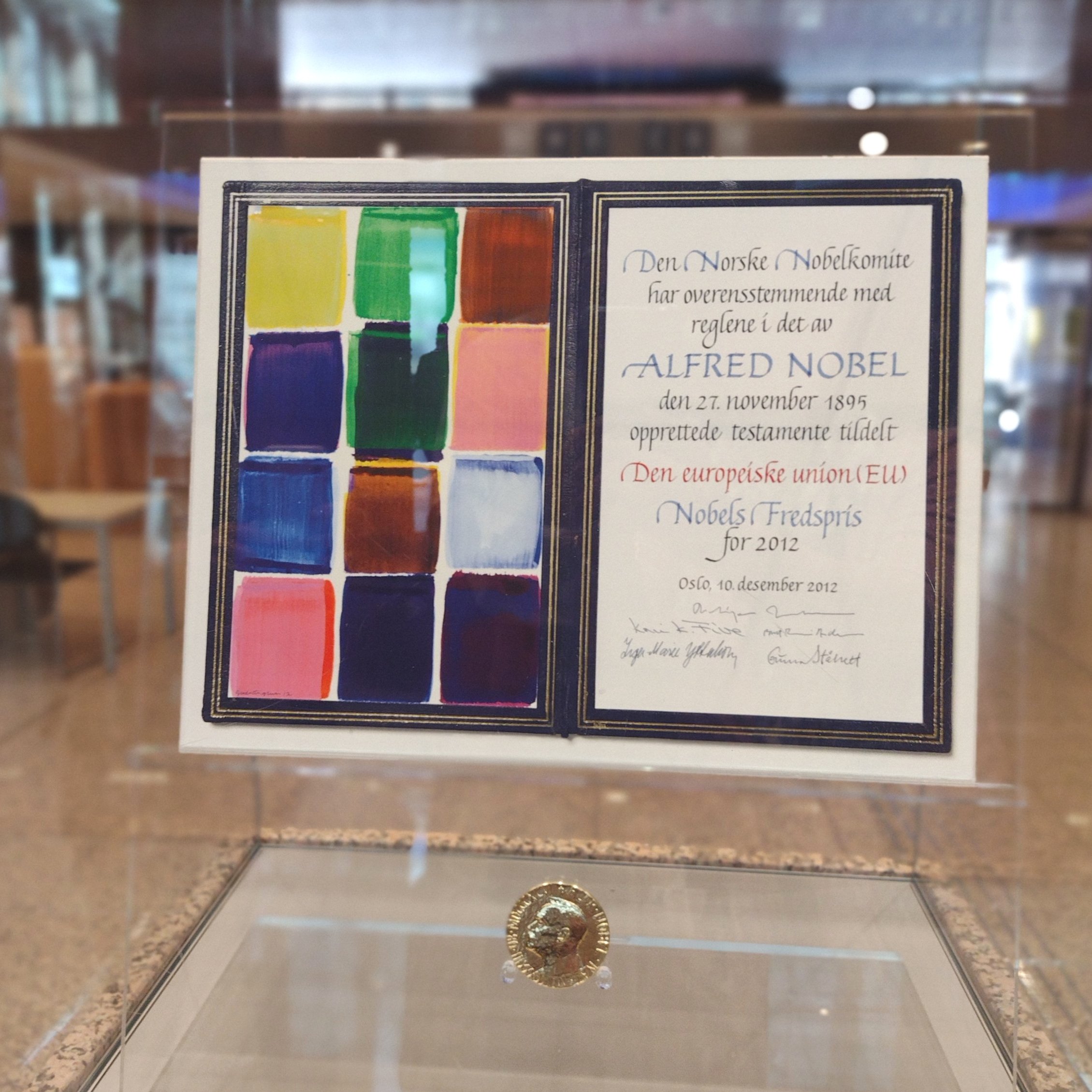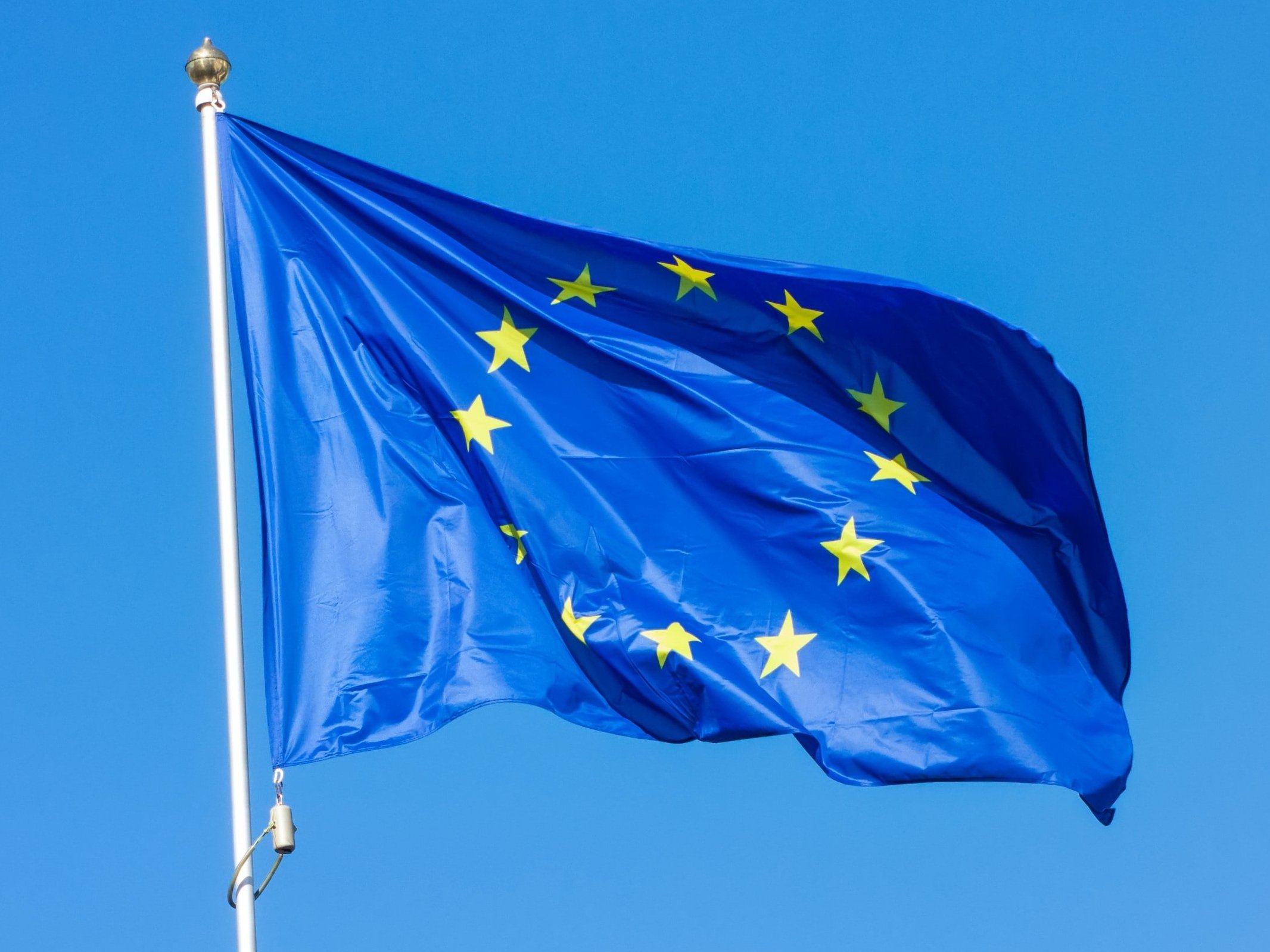11 Facts You Should Know about the European Union
What is the European Union? If you had asked me this question six months ago, I may have answered something like:
It’s a group of allies - like the UN, but for Europe.
It’s an economic agreement that lets many countries use the same currency and share economic resources.
It makes travel easier by reducing passport checks at international borders.
Each of these answers is technically correct, but none really articulates the main purpose and function of the European Union.
This summer I traveled to Brussels with a group of American teachers as part of Pitt University’s Brussels-Lux study tour. (learn more here). As I visited various EU institutions and met with government officials, I gained a deeper understanding of the complexities of the European Union. Allow me to share:
11 facts every teacher should know about the European Union
1. The Purpose of the European Union
The Czech Republic seat at the table in a European Council meeting room
The main reason the EU exists is so there will never be a war in Europe again. Multiple EU officials expressed the idea that,“we’d rather talk for 10 years than fight for 10 minutes. We settle our differences around a table.” While today, the European Union is largely seen as an economic entity, its original purpose is to provide a platform for peaceful resolution of disagreements.
2. The Nobel Peace Prize
The 2012 Nobel Peace Prize was awarded to the European Union for its role in promoting peace: thanks largely to its efforts, there has been no war among EU members since the end of World War II
The EU’s Noble Peace Prize on display in the European Parliament Building
3. United in Diversity
The motto of the European Union is “United in Diversity”, and it is one of the most diverse political entities in the world. The EU encompasses 27 countries, 24 official languages, and a population of around 440 million. The size of the EU is 4.2 million square kilometers, making it more densely populated than the US (330 million people in a land area of 9.8 million kilometers squared.) For interesting maps comparing the geography of the EU and the US, check out this link. And for more information on EU demographics, visit The EU's official website
4. Foundational Values
The EU has 6 foundational values:
Human dignity
Freedom
Democracy
Equality
Rule of Law
Human Rights
You can learn more about how these values are applied at the official European Union website.
5. EU - US relations
The EU and the US share a warm and close partnership, despite any policy disagreements we may have. When asked about differences of opinion between the EU and the US, staffers encouraged us to distinguish between what we may see on social media and the truth: the EU and the US share values of freedom and human rights, and these shared values are the foundation of our strong partnership. To learn more about the EU’s relationship with the US, visit the Delegation of the European Union to the US website at this link
This segment of the Berlin Wall, featuring US President John F. Kennedy, sits at the entrance of the European Commission building. This particular segment was selected to represent the strong EU-US partnership and in honor of the key role the United States had in reuniting Europe post-Communism.
6. Public Opinion in the EU
The EU conducts frequent public surveys providing rich statistical data on topics including the economy, education, science and research, and external relations. Survey results are available at the Eurobarometer website along with additional resources such as info sheets on each country, summary reports in various languages, and beautiful infographics. Visit these links for resources to use surveys in the classroom:
My blog post on using onine surveys in the world language classroom
My free EU-themed lessons for grades 5-7:
7. The Europa Building - “The Beating Heart of Europe”
The European Council meets in the iconic Europa building, completed in 2016.
The exterior of the Europa building was designed by Philippe Samyn and is built from repurposed oak window frames from every country in the EU. Oak is the only wood that grows in all 27 member states. The architecture represents the unity - and the diversity - of the European Union.
At night, the interior ‘lantern’ structure glows from inside the Europa building.
The stunning lantern dominates the Europa building atrium
Inside the lantern, there are three conference rooms, decorated by Belgian artist Georges Meurant. Meurant chose brightly colored squares to decorate the meeting rooms because he wanted to capture a feeling of joy and movement in the space.
A brightly colored conference room inside the Europa Building ‘lantern’
The building incorporates many ecological features including repurposed construction materials, solar panels, a rainwater catchment for toilets, and lots of natural light. It is affectionately called “The Beating Heart of Europe.”
Read more about the architecture of the Europa Building at this link to the official EU website
8. EU Language Policy
Managing 24 official languages poses unique challenges in the European Union. According to EU policy, each language maintains equal status and value. Simultaneous interpretation is available in up to 24 languages at EU meetings (read how it works in my blog post here) and documents are released in every language at the same time. The EU also provides support to member states in improving modern language education; EU nations are encouraged to begin second language instruction in elementary school, and many EU nations require study in a third language. Read more about the language policy of the European Union at the EU website:
Click here to learn about the European Day of Languages celebration.
And visit the Pew Research website for a comparison with world language instruction in US schools.
9. Issues To Watch in the EU
The leadership of the European Union hopes to address the world’s most challenging problems, in a way that allows every EU member state to have a voice. Each year, the European Parliament publishes “Ten Issues to Watch in (Year)” to highlight key challenges the organization is addressing. 2022’s list included:
Greenhouse gas and economic growth
Europe’s semiconductor supply
Sustainable agriculture
Nuclear non-proliferation
Economic recovery
Monetary policy
Internet security
The future of the EU
LGBTIQ equality
EU defense
You can read “10 issues to watch” for yourself at this link.
10. Participation in the EU is based on treaties.
Some noteworthy treaties include:
The Treaty of the European Union (1992) which officially established the EU. 12 countries participated. (Today, the EU comprises 27 countries)
The Schengen Agreement (1995) established passport-free travel between member countries. The original 7 countries in the Schengen zone have grown to 21 countries today.
The Introduction of the Euro in 12 EU countries (2002). Today, 19 countries use the Euro.
Learn more about the history of the EU and its treaties on the European Union official website.
When new countries are considered for EU membership, they must demonstrate their economy is strong enough to compete in the open market and their legal infrastructure is robust enough to enforce European Union treaties. In June 2022, Moldova and Ukraine joined 5 other countries in official EU candidate status.
11. Understanding EU governance
While the European Union has some structures in common with the United States’ government, the system is not as simple as the “executive - judicial - legislative” system Americans are familiar with and is, in fact, quite a bit more complicated and overarching. To learn more about the EU’s government structure, visit my blog post on an overview of the Government of the European Union, and links to EU teaching resources.
What does the EU mean to you? What surprised you in this blog post? Share in the comments!







